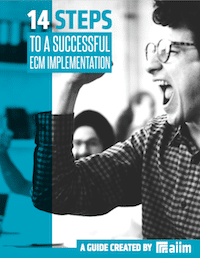The AIIM Blog
Keep your finger on the pulse of Intelligent Information Management with industry news, trends, and best practices.
Certified Information Professional (CIP)
We just released the results of an independent market survey of more than 200 business executives, attesting to the value of certification for information professionals.
Share
It's not that long ago that emails were simply out there. Not much, if any, thought was given to email as something that needed to be managed in the same way as other information resources. The common assumption about email was: Storage is cheap, so we can just keep everything. And if we need to find it, well, Outlook and Exchange have search functions! But, the way email messages are stored, backups are made, and archives are kept are important because they all have an impact on how findable and shareable the information they contain ends up being. Ultimately, content and information that you're unable to find is worthless. And the challenges with unmanaged email don't stop there. What about emails that have been archived elsewhere, or simply saved to someone's desktop? And what about the people searching from within other applications? And what of the attachments? In this video session, we'll explore the basics of email management with a look at: Basic Architecture Storage and Backup Archiving
Share

Making an ECM implementation successful requires planning and attention to detail. The best way to create the right solution is to identify organizational goals and priorities. Learn how to manage a successful implementation in our free guide.
Email is the de facto standard for business communication across organizations at this time. Just as any other type of business information and record, email must be included as part of, and adhered to, the organizational standards addressing information and records. In this post, we’ll explore the art and discipline of email management with a two-part video series. What Are the Key Concepts of Email Management? In Part 1, we cover the important concepts of email management, including: Policy Management Acceptable Use
Share
1. It’s safer than you think. When transferring massive amounts of important documents onto virtual servers, security is a common concern. A ‘cloud’ doesn’t sound safe—it sounds like anyone can reach inside and take what they want. People think that since something so intangible can’t be impenetrable, on-site servers are a smaller risk. You can see them, touch them, and put padlocks on them. What could be more secure? Cloud networks, for one. The fact is that their security measures frequently surpass those of traditional corporate infrastructure. Just because you don’t see where your information’s going doesn’t make life in the clouds any more dangerous: virtual servers can be just as safe as physical ones—and often safer.
Share
Enterprise Search is a key part of helping you solve your organization’s biggest information-related problems and plan for its future. In this post, we’ve included five video sessions from AIIM’s Certified Information Professional preparatory series covering everything you need to know about Enterprise Search.
Share
Automation | Document Management
All organizations produce documents, some even hundreds or thousands a day. Information contained in these documents is often vital to business – from producing sales quotations, policy, and procedure documents to employment or legal contracts. While some content in these documents will change, other aspects, such as its structure and how it is formatted, may not. In other words, many documents contain repetitive content that changes little from one document to the next and variable content that must be accurately personalized. Document automation can streamline the creation of the simplest or most complex corporate document, but many companies are confused by how it works. Below are five myths organizations need to think about when considering how they handle document creation.
Share